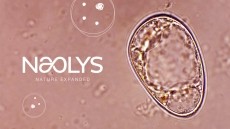Moisturizers containing topical cholesterol could be the answer for UV-damaged skin

Published in the Journal of Dermatological Science, the researchers evaluated the effects of major lipid ingredients in moisturizers (cholesterol; linoleic acid; and N-oleoyl-phytosphingosine, a synthetic ceramide) on skin responses to UV in tape-stripped human skin.
They found that whilst topical cholesterol protected the barrier-disrupted skin against UV-induced damage, linoleic acid or N-oleoyl-phytosphingosine alone have the potential to aggravate the damage.
The Seoul-based research team evaluated the effects of the three lipid ingredients on the skin of healthy volunteers over the period of three days.
Differing responses
After 2 days of lipid-application, the areas were irradiated with UV, and skin samples were obtained 24 hours after irradiation. Histologic features and the expression of the markers of collagen metabolism and inflammatory mediators were then evaluated.
Compared to vehicle, topical cholesterol significantly decreased the degree of dermal inflammatory infiltrates and exocytosis, and also decreased the expression of certain proteins and enzymes (MMP-1, IL-6, and IL-1ß mRNA).
In contrast, topical linoleic acid increased the induction of apoptotic cells, due to programmed cell death, and the expression of certain enzymes and proteins.
Likewise, the scientists explained that “N-oleoyl-phytosphingosine increased the expression of MMP-1 and IL-6 mRNA, while decreasing the expression of COX-2 mRNA.”
Furthering knowledge and education
Little is known about the ability of lipid ingredients in moisturizers with molecular weights of less than 500 to penetrate human skin and affect skin responses to UV, which prompted the researchers to carry out the study.
Chemicals with molecular weight less than 500 and adequate lipid solubility can penetrate the intact human skin.
As many lipid ingredients in moisturizers have molecular weights less than 500, the Korean researchers say that these may penetrate into the skin and affect skin responses to UV; however, further research may be needed regarding this phenomenon.















